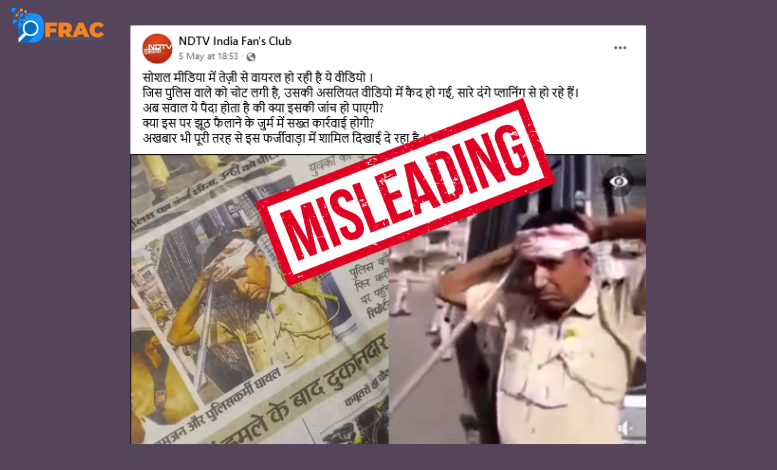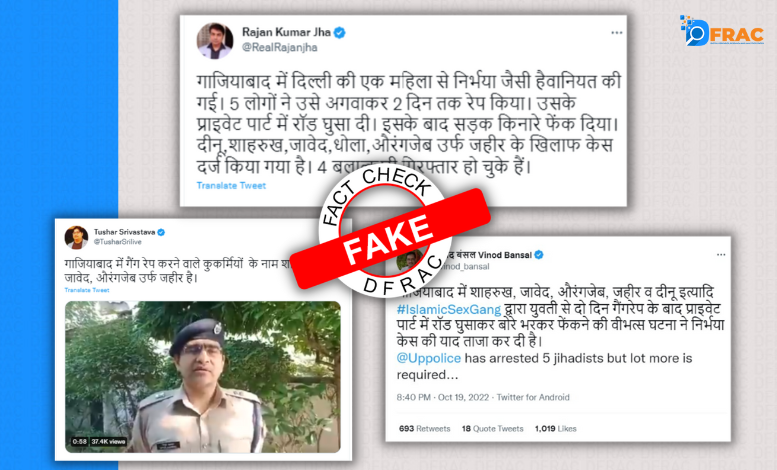Around the world, and more specifically in India, disinformation is spreading and becoming a successful phenomenon of deception. The Covid-19 pandemic has shown how fast and wide information can spread: so fast, that the phenomenon has been given the name, “infodemic”. This disinformation, in Indian context, is broadly categorized into two — fake news and hate speech.
Fake news is as old as news, and hate speech is as old as speech. But the digital age has provided a ripe environment for the virulent reproduction and visibility of both. Overall, the disinformation undermines human rights and many elements of good quality democracy.
In the time of the Covid-19 pandemic and religious-political divisions in India, the social media is being used as a tool of distrust to incite panic, confusion, and disharmony. The misuse of these platforms can have economic, psychological, and political impacts, both online and offline, and can lead to discrimination and even violence. In our country, we are hearing this alarm.
“It is our capacity for reasoned communication that makes elections possible and allows our representative political systems to function and adapt. Freedom to speak empowers citizens, individually or collectively, to advance their interests and shape the institutions whose decisions impact their lives,” wrote Laura Chinchilla, the chair of the Kofi Annan Commission on Elections and Democracy in the Digital Age. Her words echo when we analyze some of the key happenings in our country recently.
Farmers’ agitation
Farmers in India are protesting the newly introduced Farm Reform Laws as they deem them to be anti-farmers. Their agitation in the form of protest camps and processions have been going on for about two years. This agitation has suffered various attacks of fake news and hate speeches, most prominent of which was the dissemination of a news item that “pro-Khalistan” and “pro-Pakistan” slogans were raised by some of the protesting farmers. This news was not only peddled by the so-called IT cell of the Bharatiya Janata Party, but it was telecast as being true by popular TV channels like Zee News and Republic TV. It discredited the peasant agitation to some extent and when the police crackdown took place, one of its prominent leaders, and now its virtual face, Rakesh Tikait, broke down before the camera while seeking support of deserting farmers.
CAA protests
During the 2019 anti-Citizenship Amendment Act protests launched primarily by Indian Muslims throughout the country, the media machinery — both mainstream and social media — invented several sorts of theories. One most dangerous one was to colour the protest into the binary of Hindus and Muslims. It worked so explosively that communal riots broke out in Northeast Delhi only because of such a protest and more than 50 people lost lives. Even during the riots, several fake videos and venomous hate speeches were circulated to fan the passions of the rioters. Many of such videos are still in circulation and many innocent people are behind the bars only because of such bogus public information. The violence during the CAA protests is one of the darkest blots on the forehead of our democracy.
Parliamentary election 2019
In India, the world’s largest democracy, fact-checking news sites estimated that during the 2019 parliamentary elections, the spread of misinformation increased by 40 percent compared with non-election times.
Damage to democracy
In any democratic context, freedom of speech and expression ensures that political parties have the space to conduct fair political campaigns. However, this democratic system relies on public opinion and votes. On one hand the democratic system protects free and fair campaigns and elections, but on the other, the very voters who make democracy possible are not always ensured complete and true information. It is ironic that the very democratic principles that ensure free and fair speech are compromised when the same principles allow for the spread of disinformation.
Contentious issues in India currently include violent expressions of Hindu nationalism, Islamist radicalization after the takeover of Afghanistan by Taliban, the impact of Covid-19 pandemic, unemployment and the possible discontent among the public with the government.
Disinformation, fake news, and its variants have become buzzwords in Indian political rhetoric, such that voters are potentially swayed not only by fake news itself, but the attribution of fake news to parties’ respective adversaries. This burdens the Indian citizenry in two ways. First, they have the responsibility of unraveling the truth in terms of the content of the information being discussed, and second, they must also determine the integrity of political parties – who may very well be inaccurately accusing adversaries of spreading disinformation for the purpose of painting them in an unethical and immoral light.
Voters have to be better equipped to distinguish between political propaganda and disinformation campaigns as the two often overlap. In the current Indian political climate, disinformation and fake news have become politicized to the extent that it is hard to distinguish whether something is actually fake or is simply labelled as fake. And this is the real danger to democracy in India.





